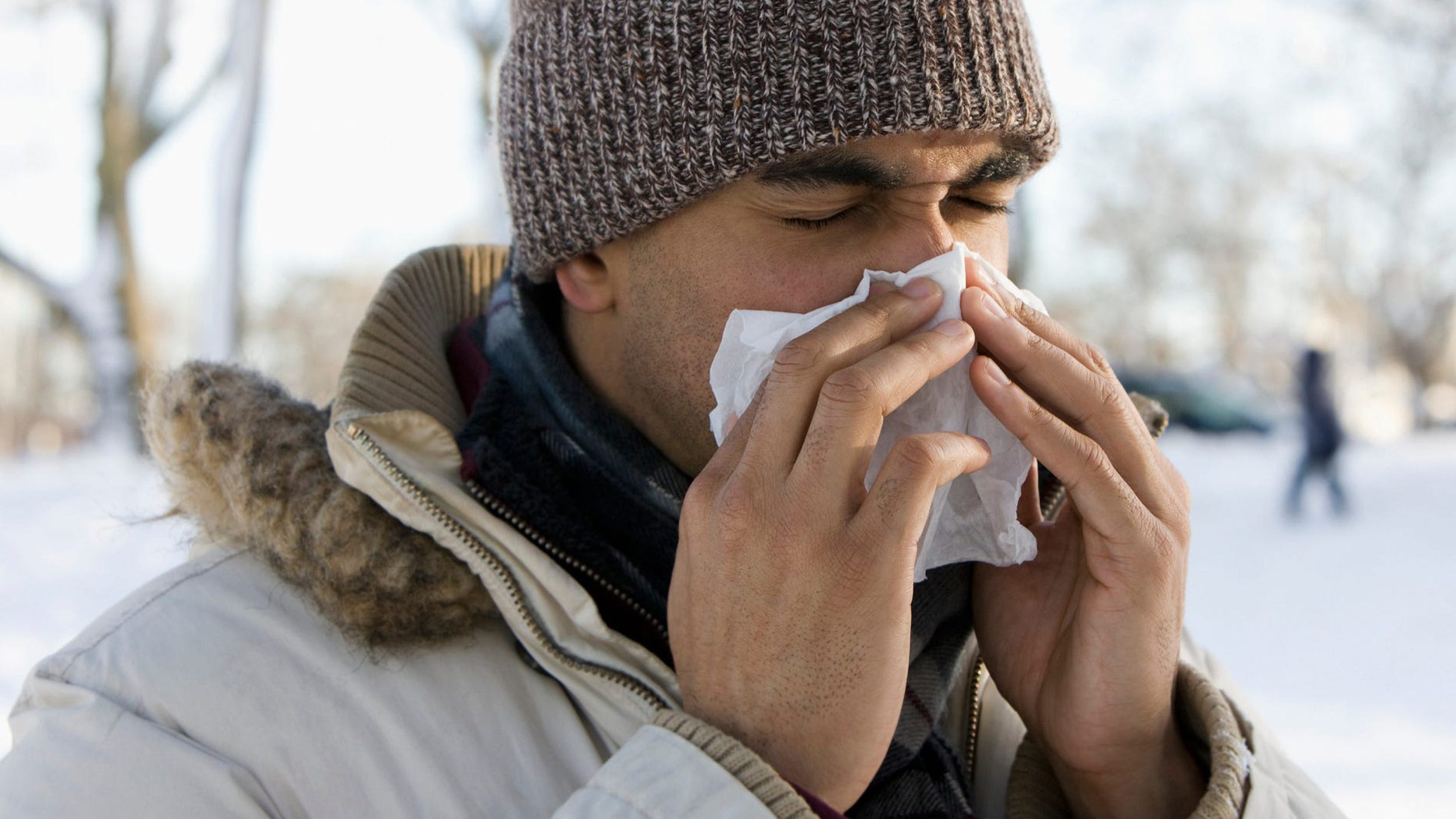
Jose Luis Pelaez Inc/Getty Images
- Cold air does not kill germs.
- The cold can actually make it easier for viruses to spread, since most viruses are covered by a protective capsule that melts in the heat.
- Cold air can also dry our nasal passages, which leaves sinuses vulnerable to infection from viruses.
- This article was medically reviewed by Tania Elliott, MD, who specializes in infectious diseases related to allergies and immunology for internal medicine at NYU Langone Health.
- This story is part of Insider’s guide on How to Kill Germs.
Cold weather on its own does not make us sick. Rather, it’s the way that germs and humans act in the winter months that causes an influx in sicknesses like the flu during the winter.
In fact, cold air can actually make it easier for viruses to spread. Here’s what you need to know.
Cold air does not kill germs
Unfortunately, cold air does not kill germs. Different viruses have different properties, but in general, viruses are very durable organisms that can survive freezing temperatures, according to Edward Bilsky, Ph.D., Provost and Chief Academic Officer at Pacific Northwest University of Health Sciences.
In fact, many viruses thrive in cold air. Influenza (the flu) and rhinoviruses (the cause of the common cold) are two viruses that flourish in cold weather, so it’s no wonder the winter months are cold and flu season — plenty of proof that cold air really isn’t killing germs.
Some viruses are able to replicate better in dry, cold temperatures. A 2016 study published in Viruses found decreases in temperature and humidity caused a greater risk of being infected by the human rhinovirus, causing the common cold.
Cold air can make viruses easier to spread
Viruses are actually protected by cold air. According to the National Institutes of Health, cold temperatures allow the virus’s outer layer, it’s envelope, to harden into a “rubbery gel.” This protects the virus, allowing it to better transmit, or spread.
Cold, dry conditions can also increase the spread of germs. "The dryer air may also allow the virus to stay airborne longer and increase the chance of another person coming in contact through inhalation," says Bilsky. This has to do with respiratory droplet formations. In dry air, the droplets remain smaller and lighter, allowing them to spread further. However, in more humid conditions, droplets can be larger and heavier, making them fall to the ground faster.
On the other hand, hot temperatures are more likely to kill viral germs. Instead of a virus's envelope hardening, it can melt, and it isn't as well fit to transmit.
"When you have heat, there's energy. This allows entropy. Basically, things fall apart," says Daniel Griffin, M.D., board certified infectious disease specialist at New York-Presbyterian Hospital. "When you get above a certain temperature, you can actually denature the proteins [in the virus], or have the proteins lose their functional shape." But that doesn't mean that certain viruses haven't adapted to survive in warmer temperatures.
Aside from the properties of viruses themselves, a lot of germ spread in cold temperatures is related to human behavior in the winter. "When it's cold outside, we tend to stay inside in small spaces together and touch the same things, and that's actually something that over time, viruses and different infectious agents have evolved to take advantage of," says Griffin.
How to protect yourself from germs and viruses
Very dry rooms, or living in very dry places, can cause your nasal passages to dry out. If our mucous membranes are dry, our line of defense against germs isn't as strong. Griffin suggests using a humidifier to combat this. "That humidity helps you to have moist, healthy, protective barriers," he says.
We should also remember that not all viruses are airborne, and you can get viruses other ways aside from breathing in virus particles. During the cold winter months, people spend their time cooped up inside in enclosed spaces with others, rather than being out in the open air more.
Griffin says physical contact is a big cause for virus spread – whether you're touching somebody else who possibly has germs on them, or touching a surface that has infectious particles and then touching your face, biting your nails, or eating, you're putting yourself at risk.
Another problem that can occur is a low levels of vitamin D, due to a lack of sunlight exposure during the colder months. Vitamin D is crucial for immune system function. A 2018 study published in Evidence-Based Complementary and Alternative Medicine showed that taking Vitamin D supplements in the amounts of 400 IU/day to 2000 IU/day helped prevent respiratory infections and common cold.
So, whether the air is hot or cold, or dry or humid, there will still be viruses and bacteria around somewhere. Make sure to always practice good hand hygiene: wash your hands thoroughly for at least 20 seconds.
Related articles from Health Reference:
- What temperature kills germs? How to use heat properly to get rid of bacteria and viruses
- How do viruses spread and how to protect yourself against infection
- Does UV light kill germs? Getting an at-home sanitizer may be worth it
- Does alcohol kill germs? Yes, as long as the solution is strong enough
- Does vinegar kill germs? It isn't the best disinfectant for viruses
